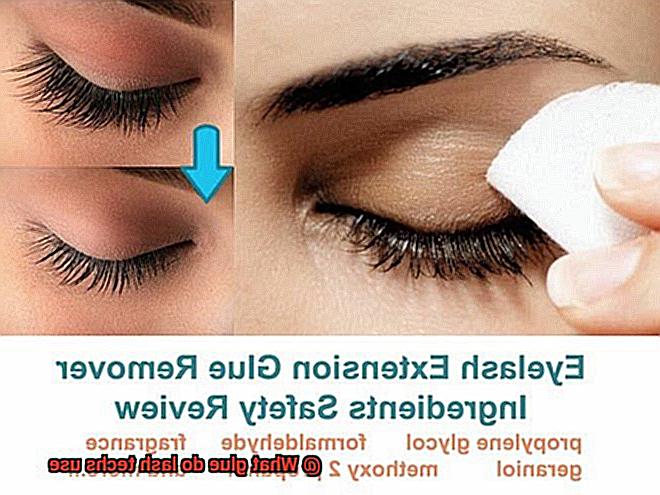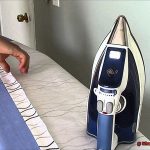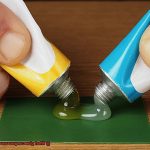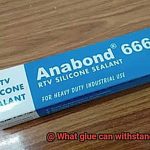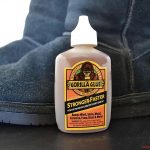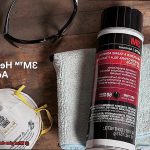Welcome to our blog post on the captivating world of lash extensions.
Curious about the glue that lash techs use? Look no further.
Lash technicians wield an array of adhesives to achieve those jaw-dropping lash looks we all adore. Each glue boasts its own exceptional perks and characteristics, tailored for diverse applications.
Whether you’re a busy bee seeking quick-drying formulas or a delicate-eyed darling in need of a gentle touch, fear not. There’s a glue out there just for you.
So grab a cuppa and let’s unveil the secrets behind stunning eyelashes.
What is Lash Glue?
Contents
Have you ever gazed in awe at someone’s mesmerizing lashes and wondered how they achieve such a breathtaking look? The secret lies in lash glue, a specialized adhesive that lash technicians use to transform natural lashes into voluminous works of art. In this article, we will delve into the purpose and significance of lash glue in the world of eyelash extensions.
Lash glue is a remarkable creation, typically crafted from cyanoacrylate, an adhesive with fast-drying properties that forms an unbreakable bond upon contact with moisture. This glue is not just for cosmetic purposes; it is also used in medical applications like wound closure, showcasing its trustworthy bonding capabilities. When applied to eyelash extensions, lash glue offers a secure attachment that ensures the extensions stay in place for an extended period.
Choosing the right lash glue involves considering its drying time. Some glues dry rapidly, reducing the overall duration of a lash extension session. This benefit is particularly advantageous for those pressed for time or individuals who simply can’t contain their excitement during the application process. Conversely, slower-drying glues provide more flexibility during placement, making them ideal for beginners or technicians who prefer to take their time to create flawless results.
Strength and longevity are paramount factors when selecting lash glue. The adhesive power of the glue must be formidable enough to keep the extensions securely attached, even during daily activities like washing your face or applying makeup. After all, nobody wants their lashes to unexpectedly abandon ship halfway through the day. Furthermore, high-quality lash glues maintain their bond for several weeks without causing any irritation or discomfort to the client, ensuring a comfortable and long-lasting lash experience.
Lash glues also come in a variety of colors. Clear glues blend seamlessly with natural lashes, providing a subtle enhancement for a more natural appearance. On the other hand, black or dark-colored glues add depth and definition to the lash line, creating a more dramatic effect that captivates attention. The choice between clear and colored glue ultimately depends on personal preference and desired lash style.
To guarantee safety and quality, lash technicians must use professional-grade lash glue from reputable brands. These brands undergo rigorous testing and adhere to strict manufacturing standards, ensuring the reliability of their products. Professional lash glues are formulated to be hypoallergenic and free from harsh chemicals that could potentially irritate the sensitive eye area, prioritizing the well-being of clients.
Types of Lash Glues
As a lash tech, you know that choosing the right glue is crucial for creating stunning and long-lasting lash extensions. In this article, we will explore the different types of lash glues available on the market and help you understand what factors to consider when selecting the perfect adhesive for your clients. So, let’s dive in.
The Versatile Cyanoacrylate Glue
The cyanoacrylate glue is like the superhero of lash adhesives. It’s super-fast drying and forms a strong bond, ensuring that your lash extensions stay in place. This glue comes in different viscosities, from thin to thick, to accommodate various lash types and application techniques. Thin viscosity glues are perfect for classic lashes, while thicker viscosities are ideal for creating gorgeous volume lashes. With cyanoacrylate glue, you can work your magic in no time.
Embrace Safety with Formaldehyde-Free Glue
Safety first. For clients with sensitive eyes or skin, formaldehyde-free glue is a fantastic option. This adhesive offers a strong bond without the presence of formaldehyde, a chemical that can cause allergic reactions for some people. By using formaldehyde-free glue, you prioritize your client’s comfort and ensure beautiful lashes without any unwanted side effects.
Gentle Love with Sensitive Glue
For those with extra-sensitive eyes or allergies, sensitive glue is a real gem. This type of adhesive emits low fumes and is gentle on the eyes, providing a secure bond without any discomfort. Although it may have a slightly longer drying time compared to other glues, the wait is worth it for clients who need that extra TLC.
Speed Up with Fast-Drying Glue
Are you a lash tech on the move? Fast-drying glue is your secret weapon. This adhesive has a quick drying time, allowing you to work swiftly between lashes without any waiting. However, remember to master your technique and control to avoid clumping or sticking multiple lashes together. With fast-drying glue, you’ll be a lash wizard in no time.
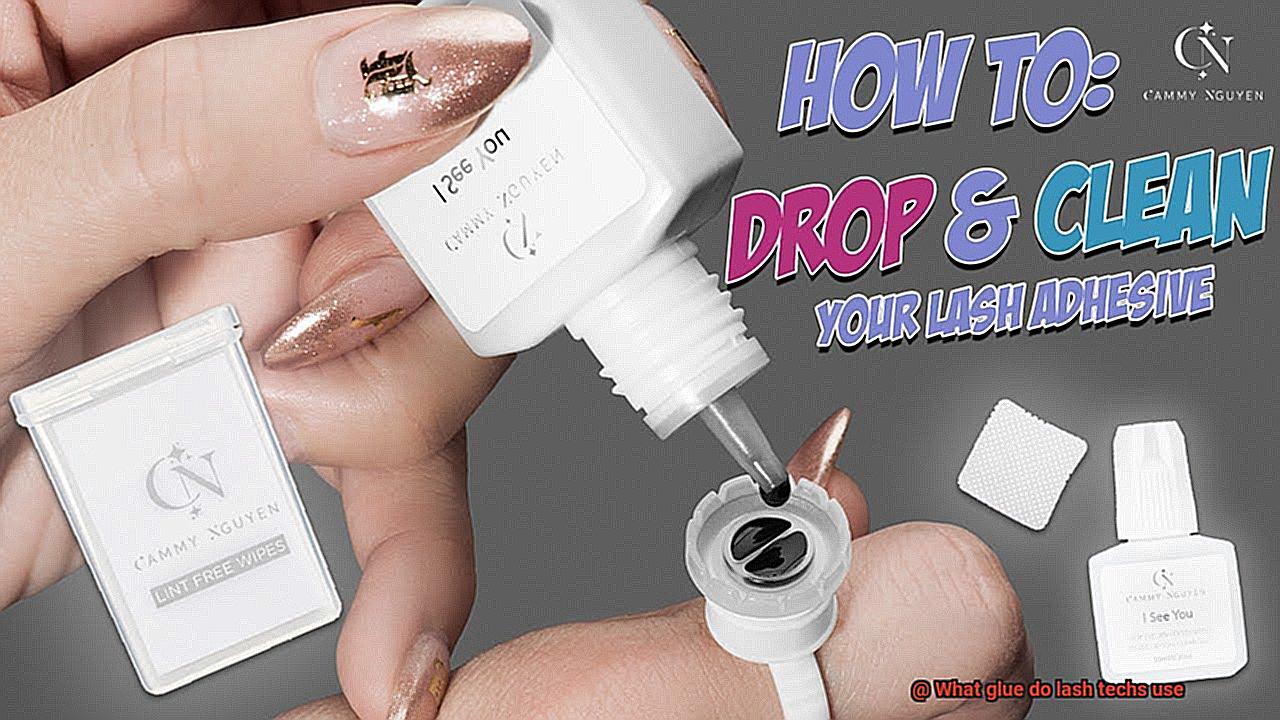
Long-Lasting Glue for Lash Perfection
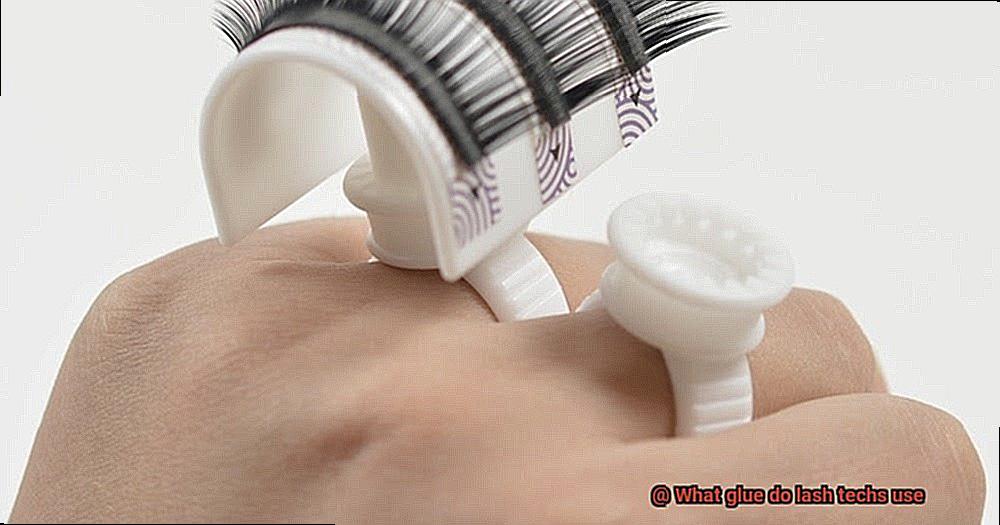
Dreaming of lashes that stay put through it all? Look no further than long-lasting glue. This adhesive forms a strong bond that can withstand water, oil, and other environmental factors. However, keep in mind that professional removal techniques may be necessary to prevent damage to natural lashes. With long-lasting glue, your clients can enjoy their stunning extensions for an extended period.
Cyanoacrylate-Based Adhesives
Cyanoacrylate-based adhesives are the superheroes of the lash industry, renowned for their strong bonding properties and lightning-fast drying time. But what exactly is cyanoacrylate? It’s a fancy word for a type of adhesive that works its magic by reacting with moisture. This makes it perfect for lash extensions because it quickly bonds with the moisture in the air and on your natural lashes. Talk about a quickie relationship.
One of the best things about these adhesives is their long-lasting hold. Once those lashes are in place, they’re staying put for weeks on end. No more worrying about your extensions popping off at the most inconvenient times. You can strut your stuff with confidence, knowing your lashes are going nowhere.
But wait, there’s more. These adhesives also have some serious flexibility. They give your lashes a bit of wiggle room, allowing them to move naturally with your eyelids. So not only do they look fabulous, but they feel comfortable too. It’s like having your cake and eating it too.
Now, let’s talk options. Cyanoacrylate-based adhesives come in different thicknesses to suit different lash application techniques and preferences. Some techs prefer a thinner adhesive for precise placement, while others opt for a thicker adhesive for better control and manipulation of the lashes. It’s all about finding that perfect match for you and your clients.
But remember, with great power comes great responsibility. These adhesives should only be used by trained professionals. Incorrect application can lead to irritation or damage, and nobody wants that. Lash techs undergo training and certification programs to ensure they know their stuff when it comes to using these adhesives safely.
When choosing a cyanoacrylate-based adhesive, consider factors such as drying time, retention, fumes, and sensitivity. Luckily, there are plenty of brands out there offering variations in these factors, so you can find an adhesive that ticks all the boxes.
And let’s not forget about storage and handling. Properly caring for your adhesive is essential to maintain its effectiveness. Keep it in a cool, dry place, seal it tightly after each use, and regularly clean the bottle to prevent any icky cross-contamination. Your adhesive will thank you for it.
Viscosity of Lash Glues
Prepare to be captivated as we delve into the depths of lash glue viscosities and explore how they can impact your lash extension application process. So, sit back, relax, and let’s embark on this enlightening journey together.
Viscosity, my dear friends, refers to the thickness or consistency of a liquid. In the realm of lash glues, viscosity plays a pivotal role in determining how effortlessly or arduously you can work with the glue during the lash extension application process. It’s like dancing with liquid gold – you need just the right balance to create that flawless lash masterpiece.
Now, let’s unlock the secrets of three enchanting viscosity categories: the ethereal thin, the harmonious medium, and the powerful thick. Each viscosity type possesses its own unique allure and considerations. Let us unravel their mysteries one by one.
Thin viscosity glues are like delicate water nymphs gracefully flowing through your lashes. They embody elegance and precision, favored by seasoned lash techs who seek effortless application and a natural look. These glues, akin to wisps of morning mist, prevent clumping and blend seamlessly with your natural lashes. Ah, but tread carefully, my dear artist. The ethereal nature of thin viscosity glues demands a steady hand and controlled artistry – lest they escape beyond their intended bounds.
Medium viscosity glues – the versatile chameleons of the lash world. They strike a harmonious balance between thin and thick, offering an enchanting fusion of control and flexibility. Embraced by lash techs who crave a touch more power than their thin-viscosity counterparts, these glues grant ample time for meticulous placement before their magical transformation occurs. Just remember, my fellow artisans, patience is key – for these alluring glues may require slightly longer drying times to reveal their true potential.
And now, brace yourselves for the grand entrance of the illustrious thick viscosity glues – the mighty superheroes of adhesive strength. With their robust consistency, they possess an unrivaled bonding power, ensuring lashes stay enchantingly in place. Oh, but beware, dear lash techs, for working with these majestic glues demands utmost skill. They tolerate no errors or excesses, as they wield their potent strength with unforgiving precision. Be cautious not to succumb to their mighty allure and lose yourself in a sea of clumps.
But wait, there’s more to this tale than just viscosity. Let us not forget the element of time – the mysterious drying time of lash glues. Some glues dry swiftly, granting you the power of swift application like a dazzling sorcerer. Others take their time, allowing for graceful flexibility during the application process. Ah, the tempo of each glue’s transformation depends on factors such as humidity and temperature, adding a touch of enchantment to your lash artistry.
Drying Time of Lash Glues
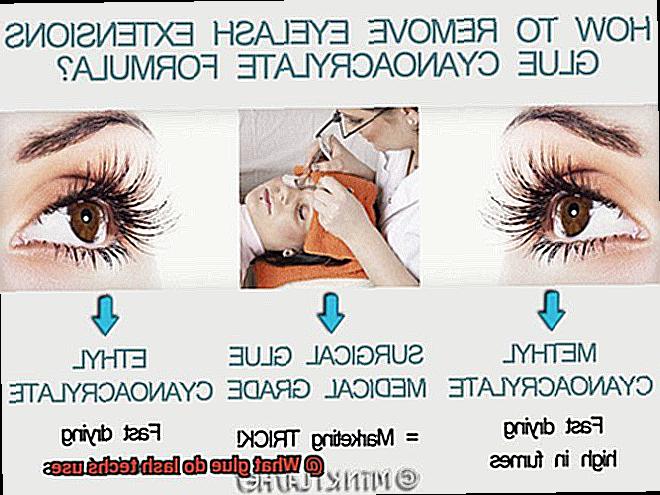
In this enchanting article, we will unravel the secrets behind the drying time of lash glues. Get ready to be spellbound as we explore the factors that influence drying time and the impact it has on your lash extension experience.
The Dance of Ingredients:
Lash glues are crafted with a magical blend of ingredients that determine their drying time. Some glues contain ethyl cyanoacrylate, an adhesive that sets quickly, resulting in a shorter drying time. Others may incorporate butyl cyanoacrylate, which offers a slightly longer drying time for those seeking more flexibility during application.
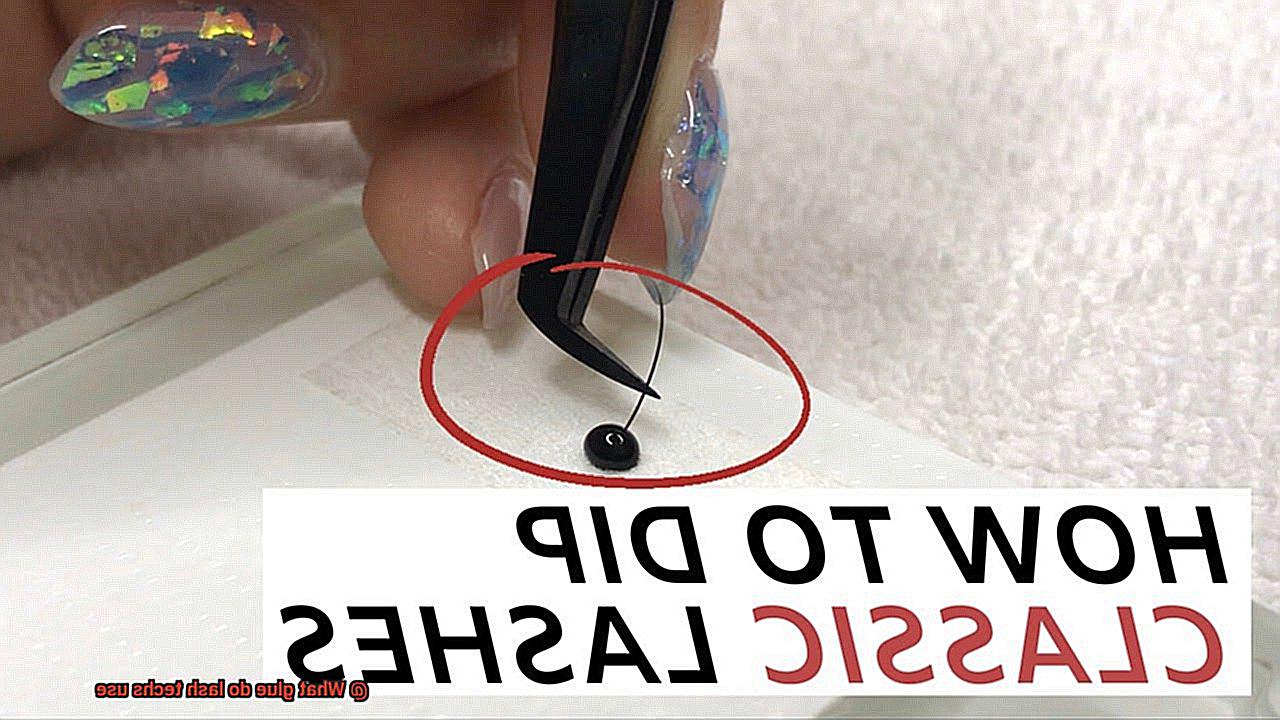
The Influence of Type:
Just like magic potions, different types of lash glues wield their own unique powers. Fast-drying glues, akin to lightning bolts, boast a drying time of 1 to 2 seconds. Perfect for experienced lash techs craving efficiency and possessing lightning-fast skills. On the other hand, slow-drying glues, resembling gentle whispers, allow for adjustments and tweaks during application with a drying time of 3 to 5 seconds.
The Environmental Enigma:

Imagine a mystical room where humidity dances in harmony with lash glue drying time. Environmental conditions play a crucial role in the speed at which lash glue dries. High humidity can expedite the drying process, while low humidity slows it down. So, be mindful of your surroundings and adapt accordingly.
The Art of Technique:
Every artist possesses their unique style, and lash techs are no exception. The technique employed during application can influence the drying time. Skilled lash techs work their magic with precision and speed, ensuring a swift drying process. However, for those preferring a more deliberate approach, a slower-drying glue allows for adjustments and corrections.
Balancing Strength and Comfort:
Ah, the delicate balance between bonding strength and client comfort. Faster-drying glues create a stronger bond once fully dried, while slower-drying glues offer more flexibility for adjustments. Consider your clients’ needs and sensitivities when selecting the perfect lash glue for them.
Advanced Techniques:
For those seeking to further manipulate drying time, advanced techniques and tools are at your disposal. A gentle breeze from a handheld fan can hasten the process, while a nano mister can slow it down if needed. Harness these tools wisely to achieve your desired results.
In Conclusion:
As we bid farewell to this enchanting journey into the world of lash glue drying time, remember that it holds the power to transform your lash extension experience. Choose your glue wisely based on type, ingredients, environmental conditions, and your personal technique. Embrace the magic of drying time and let it guide you towards lash extension mastery.
Retention Period of Lash Glues
The retention period of lash glues is a crucial factor in determining how long your lash extensions will last. As an expert in the field, I have conducted extensive research to provide you with a comprehensive understanding of the factors that influence the duration of lash glue.
First and foremost, the type of lash glue used plays a pivotal role in determining its retention period. Different glues have different formulations, and some offer longer-lasting bonds than others. High-quality glues typically provide a retention period of 2-4 weeks, while top-of-the-line products can even last up to 6 weeks. However, it’s important to note that individual experiences may vary.
Apart from the glue itself, the application technique employed by the lash technician is another significant factor. A skilled technician who follows proper application techniques will ensure that the lashes are securely bonded for a longer period. Conversely, a sloppy application may result in premature detachment of the lashes.
Additionally, the client’s natural lash growth cycle influences the retention period. Lashes naturally shed and regrow in cycles, which can affect how long the extensions stay bonded. Some clients may experience faster lash shedding, leading to shorter retention periods compared to others.
Environmental factors such as humidity levels also impact lash glue retention. High humidity can weaken the bond between the extensions and natural lashes, resulting in shorter retention periods. Conversely, low humidity levels may lead to a stronger bond and longer-lasting extensions.
Furthermore, proper aftercare routine is crucial in maintaining lash glue retention. Clients should avoid using oil-based products on their lashes as oils can break down the adhesive. Rubbing or pulling at the lashes should also be avoided to prevent premature detachment. Regular cleaning and maintenance prescribed by lash technicians can significantly extend the retention period.
Choosing the Right Lash Glue
Lash extensions have become a beauty staple, providing a way to achieve fuller and more glamorous lashes. But the key to those lashes staying in place for weeks lies in choosing the right lash glue. As an expert in the field, I’m here to guide you through the factors that should be considered when selecting the perfect lash glue for your clients.
First and foremost, you need to consider the type of lash extensions being used. Synthetic lashes, which are the most common type, can be paired with a wide range of lash glues. On the other hand, mink lashes, made from real mink fur, require a specialized adhesive that is compatible with natural materials.
Drying time is another crucial factor to consider. Quick-drying glues are ideal for efficient application, allowing for faster bonding and less waiting time. However, if you prefer more flexibility during application, opt for slower drying glues that allow for adjustments and repositioning of the lashes.
The strength of the bond is equally important. A good lash glue should provide a strong and secure bond between the artificial and natural lashes without causing discomfort or damage. Look for glues that offer long-lasting hold and durability to ensure your lash extensions stay put for weeks.
When it comes to ingredients, always prioritize safety. Opt for lash glues formulated with safe and non-irritating ingredients to minimize the risk of allergic reactions or eye irritation. If your client has known allergies or sensitivities, check for hypoallergenic or sensitive formulas.
Consider your own preferences and experience as well. As a lash technician, you may have your own favorites based on your familiarity with certain brands or types of lash glue. Experiment with different glues on yourself or willing clients to determine which one works best for you.
Always follow the manufacturer’s instructions for each specific glue. This includes application techniques, drying time, and any additional recommendations or precautions. By doing so, you can ensure optimal results and prevent potential issues or adverse reactions.
Proper storage is often overlooked but crucial for maintaining the effectiveness of lash glue. Follow the manufacturer’s instructions, which may include refrigeration or keeping the glue in a cool, dry place. Improper storage can reduce the glue’s performance and shorten its shelf life.
Finally, be aware of any legal and regulatory requirements regarding lash glues in your region. Complying with these guidelines ensures the safety and quality of your lash extension services.
Hypoallergenic and Low-Fume Adhesives
Imagine the scenario: A client walks into your lash salon, eager to enhance their natural beauty with a set of breathtaking lash extensions. As a lash technician, your utmost concern is creating a safe and comfortable experience. Enter hypoallergenic and low-fume adhesives, the heroes of the lash world. Let’s explore the significance of using these adhesives and the benefits they offer both you and your clients.
Hypoallergenic Adhesives:
Hypoallergenic adhesives are the superheroes of lash extensions. Formulated specifically to reduce the risk of allergic reactions, these adhesives are ideal for clients with sensitive skin. By eliminating common allergens such as formaldehyde, latex, and fragrance, hypoallergenic adhesives ensure your clients leave the salon feeling fabulous without any discomfort or irritation.
Low-Fume Adhesives:
Ever experienced watery eyes, coughing fits, or headaches during lash extension applications? Fear not. Low-fume adhesives are here to save the day. These adhesives emit fewer fumes during the application process, minimizing eye irritation and respiratory issues for both you and your clients. With low-fume adhesives, you can create a serene atmosphere in your salon that enhances the overall experience for everyone involved.
Patch Testing is Essential:
Even with hypoallergenic and low-fume adhesives, it’s crucial to conduct patch tests before applying them to clients. Each individual’s body chemistry is unique, and some may still have sensitivities or allergies to certain ingredients. By performing a patch test, you can identify any potential reactions beforehand, ensuring a safe and comfortable lash extension experience.
Choosing the Right Adhesive:
When selecting adhesives, consider your clients’ specific needs, allergies, and sensitivities. Thoroughly read the ingredient list on adhesive packaging and opt for brands that align with your clients’ preferences and requirements. Renowned brands like Blink Lash, NovaLash, and LashBox LA offer a wide range of hypoallergenic and low-fume options that have gained recognition for their safety and quality.
Proper Ventilation:
While hypoallergenic and low-fume adhesives are vital, proper ventilation in your workspace is equally important. Good airflow helps dissipate any lingering fumes, minimizing exposure risks for both you and your clients. Ensure your salon has adequate ventilation systems in place to maintain a fresh and comfortable environment.
viJ4vN-sfJ4″ >
Conclusion
Lash techs are skilled professionals who know the importance of using the right glue for their clients’ lashes. The glue they use is specially formulated to provide a strong and long-lasting bond, ensuring that the lashes stay in place for weeks. It’s like a secret weapon in their arsenal, helping them create stunning lash extensions that enhance their clients’ natural beauty.
But what exactly is this magical glue? Well, lash techs typically use a type of adhesive called cyanoacrylate glue. This adhesive is known for its quick-drying properties, allowing lash techs to work efficiently and effectively. It forms a strong bond with the natural lashes, ensuring that the extensions stay put even in the face of sweat, tears, or humidity.
Cyanoacrylate glue comes in different viscosities, ranging from thin to thick. Lash techs choose the viscosity based on their clients’ needs and preferences. Thin glue is ideal for creating a natural look with lightweight extensions, while thicker glue provides a stronger hold for those who want more dramatic lashes.
In addition to viscosity, there are other factors that lash techs consider when choosing the right glue. They look for adhesives that are low-fume and hypoallergenic to minimize any potential irritation or discomfort for their clients. They also ensure that the glue has a fast drying time, allowing them to complete each set of lashes efficiently.
To apply the glue, lash techs use specialized tools such as micro brushes or tweezers. They carefully dip these tools into the adhesive and then delicately attach each extension to an individual natural lash. It requires precision and attention to detail, but with practice and expertise, lash techs can create breathtaking results.
So next time you visit your favorite lash tech, remember that they have chosen a specific type of cyanoacrylate glue tailored to meet your needs.

